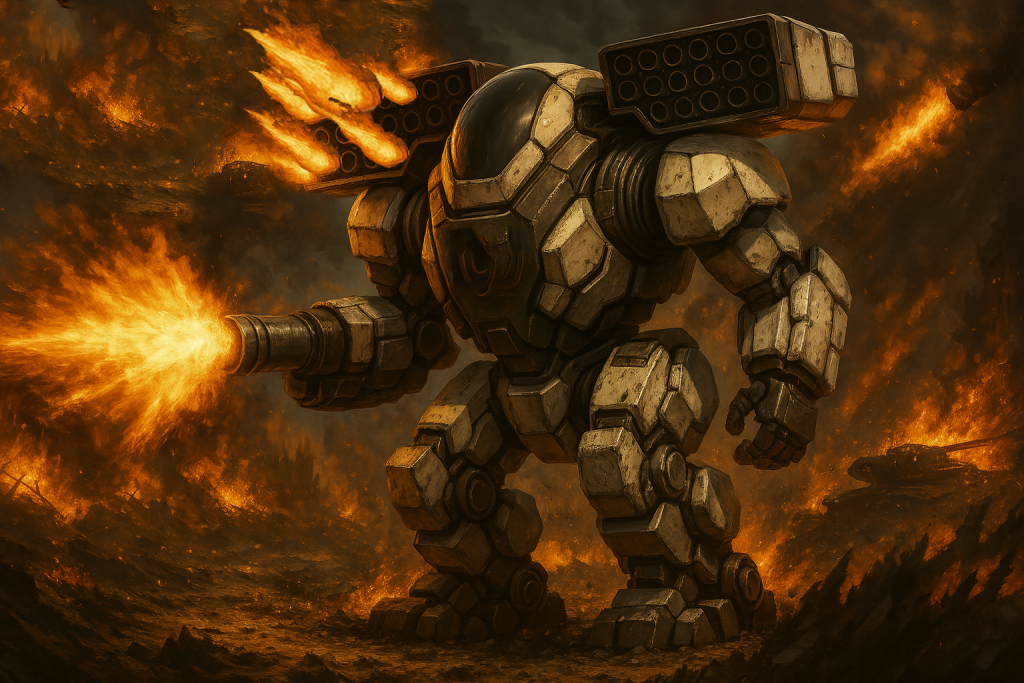
I. Origins
In the waning decades of the Star League (circa 2760s) — as the Hidden Wars rumbled over interstellar peace — the Terran Hegemony’s Defense Ministry commissioned a series of experimental heavy BattleMechs. They were designed for planetary siege, strategic deterrence, and long-range interdiction. Little-known manufacturer Cetacean Industries, a boutique engineering firm headquartered on the oceanic world of Thalassa in the Hegemony’s outer reaches, submitted an entry that was among the proposals submitted with bold design, innovation and price.
The ORCA-A from Cetacean Industries made its debut at a Davian Mech Expo in 2761. This rare screen capture is the only known available image of the first ORCA prototype. Note how none of the variant weapons are equipped. (Image courtesy of the Mercenary Review and Bonding Commission (MRBC) Museum and History Office)
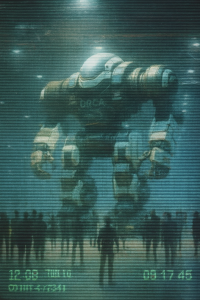
Ex-SLDF engineers and naval architects specializing in aquatic and submersible military platforms founded Cetacean Industries. Unconventional was their pivot to BattleMech design, but their expertise in structural reinforcement and recoil management made them suited to develop a Mech chassis capable of housing extreme firepower.
The result of their work was the ORCA, a 70+ ton behemoth named for its sleek, curved armor plating and devastating bite.
II. The ORCA and Its Variants
The ORCA was envisioned as a modular platform with three primary variants, each tailored to a specific battlefield role:
- ORCA-HG “BLACKFISH” (Heavy Gauss Variant): Equipped with twin Heavy Gauss Rifles, this variant was designed for long-range anti-Mech sniping and fortress breaching. The recoil mitigation systems borrowed from naval artillery stabilization allowed the ORCA-HG to fire both rifles simultaneously without compromising accuracy or structural integrity.
- ORCA-AC “BLOWHOLE” (Dual-Assault Cannon Variant): Armed with an AC/20 on the right arm and an AC-5 on the left shoulder, reinforced armor, and close-range sensor packages, the AC variant was a brutal urban combatant. It excelled in city fighting and base assaults, where its raw kinetic force could collapse buildings and punch through hardened bunkers. Mounting the AC-20 proved one of the greatest design challenges, but the Cetacean engineering team found the systems to account for recoil, heat and sway.
- ORCA-LRMx “STORMPOD” (Missile Launcher Variant): Featuring twin LRM-20 and LRM-5 launchers and an ER PPC, the LRMx variant served as a mobile artillery platform. Its advanced targeting suite allowed for precision saturation of enemy positions, making it invaluable in support roles and defensive operations.
| Variant | Primary Armament | Battlefield Role | Key Features |
|---|---|---|---|
| ORCA-HG BLACKFISH | 2x Heavy Gauss Rifles | Long-range sniper | Naval-grade recoil dampeners, dorsal array |
| ORCA-AC BLOWHOLE | AC-20 AC-5 | Urban assault | Dual-feed ammo system |
| ORCA-LRMx STORMPOD | 2x LRM-20 ER PPC | Indirect fire support | Jump Jets, Missile Boat |
All three variants shared a common chassis: a reinforced endo-steel frame, 15 tons of armor, and a robust fusion engine capable of sustaining battlefield operations for extended periods. The ORCA’s silhouette was distinctive—broad-shouldered, low-slung, and slightly hunched, with a dorsal sensor array resembling a fin.
Sources: SLDF Depot Logs (Pelagos), Spectre Company Archives, ComStar Historical Registry
III. Production and Political Sabotage
The SLDF granted Cetacean Industries a limited production license, and authorized Cetacean to produce 150 units of each variant for field testing and strategic reserve deployment. Manufacturing began in 2762, just as tensions in the Periphery escalated toward open revolt.
Unfortunately, Cetacean’s rise was short-lived. The company’s success drew the ire of larger manufacturers General Motors, Defiance Industries, and Quikscell Company, which lobbied aggressively to revoke Cetacean’s contracts. Accusations of “unproven battlefield reliability” and “non-standard component sourcing” were levied, despite SLDF test reports praising the ORCA’s performance.
By 2770, under pressure from the Hegemony’s industrial consortium, Cetacean Industries was forced to shutter its BattleMech division. The remaining ORCAs were mothballed, redistributed, or quietly sold to planetary militias and private defense firms. The company itself returned to naval engineering, leaving its brief foray into Mech design as a footnote in Star League history.
IV. The Succession Wars: Scattered and Forgotten
The ORCA’s legacy was fragmented, especially with the chaos of the Amaris Civil War and the subsequent Succession Wars. Many ORCAs were lost in the fighting or cannibalized for parts. However, available records indicate that House Davion deployed several ORCA-HG and ORCA-LRMx variants during the First Succession War in defensive operations on New Avalon, Robinson and other worlds.
Ever eager to test exotic designs, House Kurita acquired a handful of ORCA-ACs through battlefield salvage and deployed them in brutal urban campaigns on Luthien and Benjamin. However, the lack of spare parts and Cetacean’s proprietary systems made long-term maintenance untenable. By the end of the Second Succession War, most ORCAs were decommissioned or relegated to planetary museums and scrapyards.
V. Rediscovery and Mercenary Revival
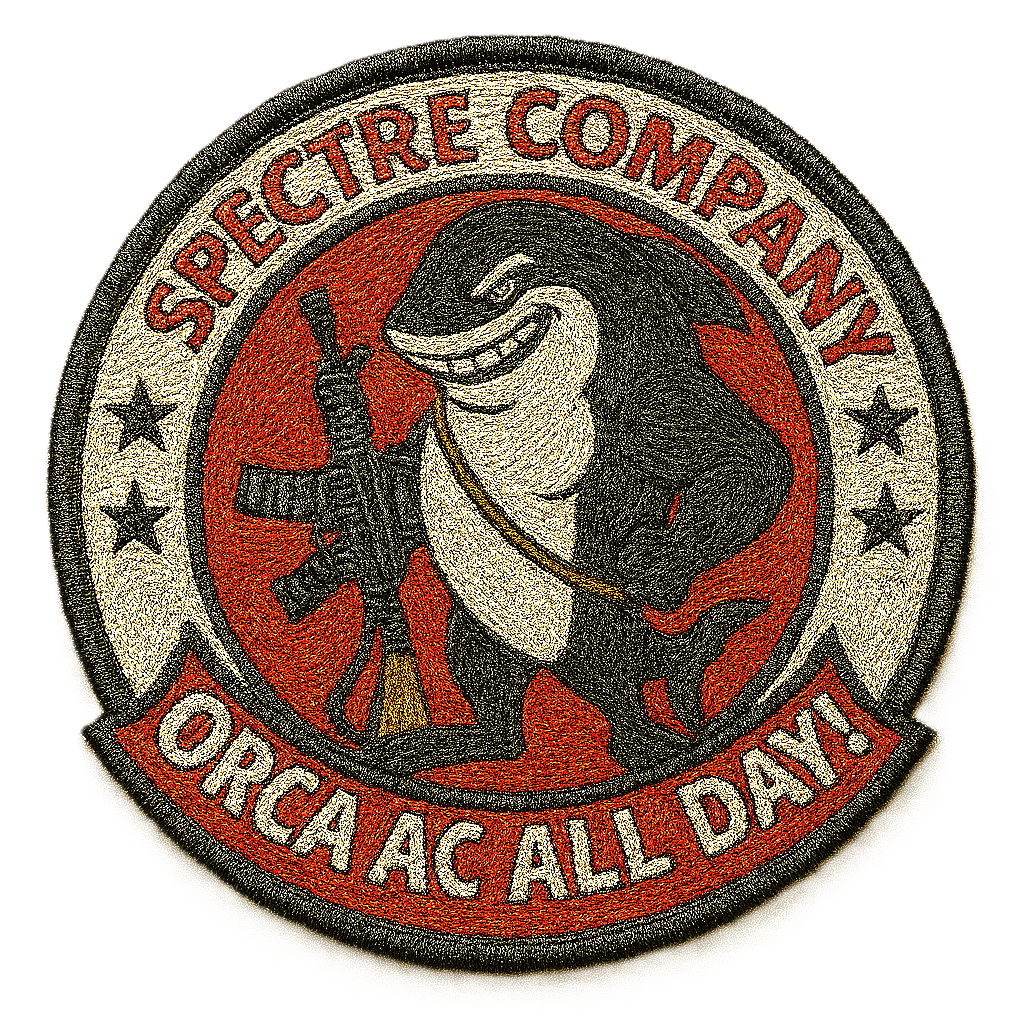
In 3045, a salvage team operating under the MRDC-authorized mercenary command Spectre Company uncovered a derelict SLDF depot on the water-covered moon of Pelagos, orbiting the gas giant Poseidon in the Taurian Concordat. Among the rusted hulls and decaying infrastructure were all three variant intact ORCA chassis preserved in cryogenic stasis.
Spectre Company’s Chief of Mech Engineering, Linus Freebold, immediately recognized the value of the find. Known for its eclectic Mech roster and deep appreciation for lost technology, Spectre Company transported the ORCAs to the company’s mobile repair ship, the ENDEAVOUR. From there, seeing potential battlefield value, a team of Spectre Company techs and engineers began the painstaking process of restoration.
Today, Spectre Company maintains one of the only operational ORCA trios in the Inner Sphere. Where feasible, each variant has been retrofitted with modern components, though many original systems remain irreplaceable. The company has developed a network of black-market suppliers, Periphery tech artisans, and ComStar archivists to source discontinued parts and fabricate replacements. However, Freebold championed what Cetacean Industries failed to recognize in its ORCAs, an unseen battlefield advantage that Spectre Company exploits on every outing.
(Image of a preserved patch worn by Spectre Company pilot, date unknown).
VI. Legacy and Cultural Impact
Cetacean Industries never achieved the fame of Defiance or Blackwell. As a result, the ORCA’s cult status has grown in recent years, and other mercenary companies have gone on scavenger hunts across the system trying to find ORCAs. MechWarrior forums and historical societies have begun cataloging the remaining few surviving Cetacean schematics. Rumors persist of a hidden cache of ORCA components buried beneath the ruins of Thalassa’s capital city.
In 3150, following the rise of the IlClan, officials invited Spectre Company to showcase their ORCAs in a commemorative exhibition on Terra, highlighting their rare Mechs from the Star League era. The ORCAs were displayed alongside relics like the Mackie, Black Knight, and Excalibur, drawing crowds of MechWarrior enthusiasts.
Above (“Anytime, Baby!”) and below are finds of rare unit patches from Spectre Company and a Mercenary group called the “Sundowners,” of which there is no history known. (Images courtesy of the Mercenary Review and Bonding Commission (MRBC) Museum and History Office)
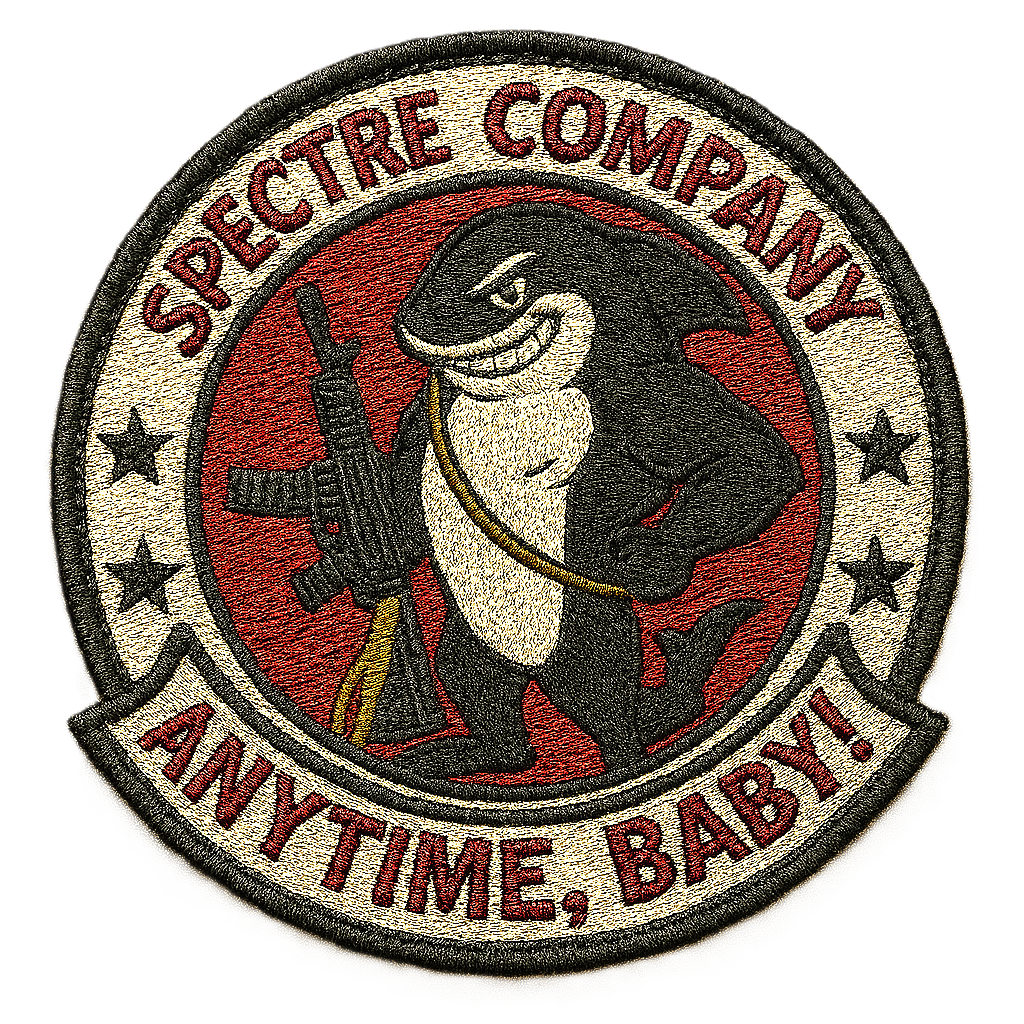
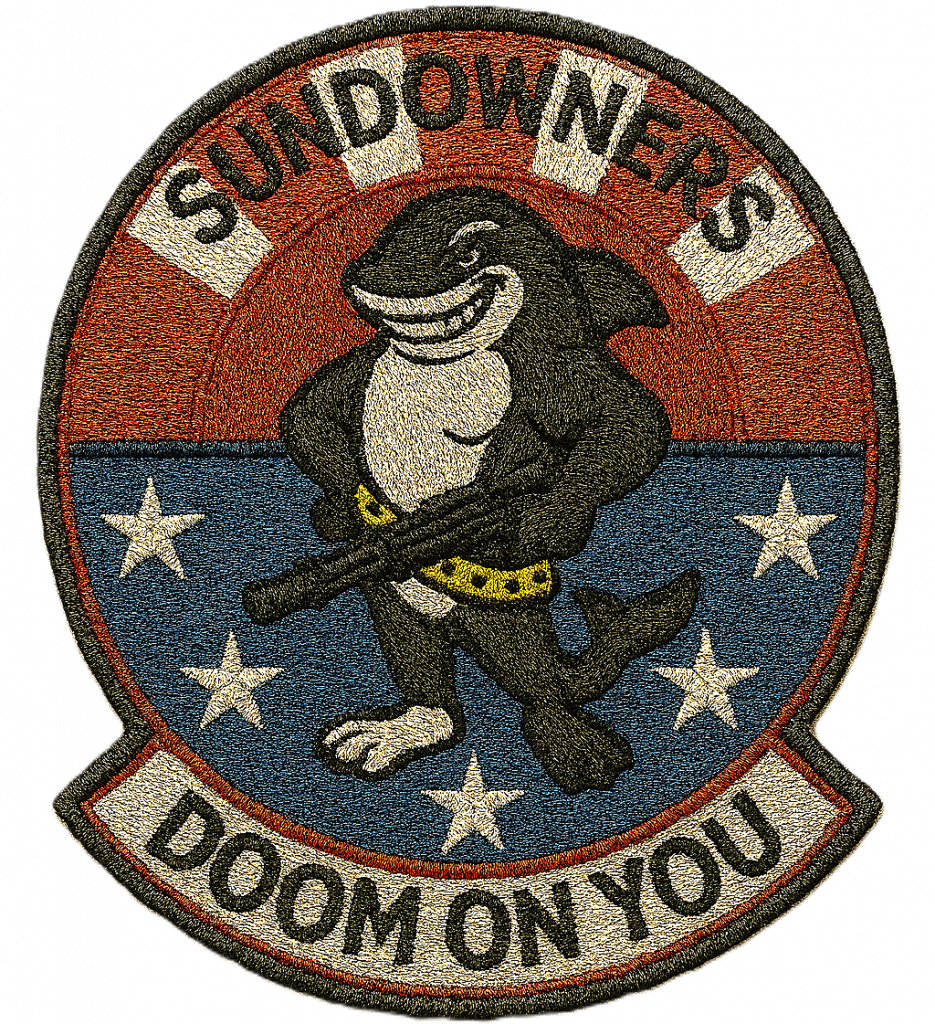
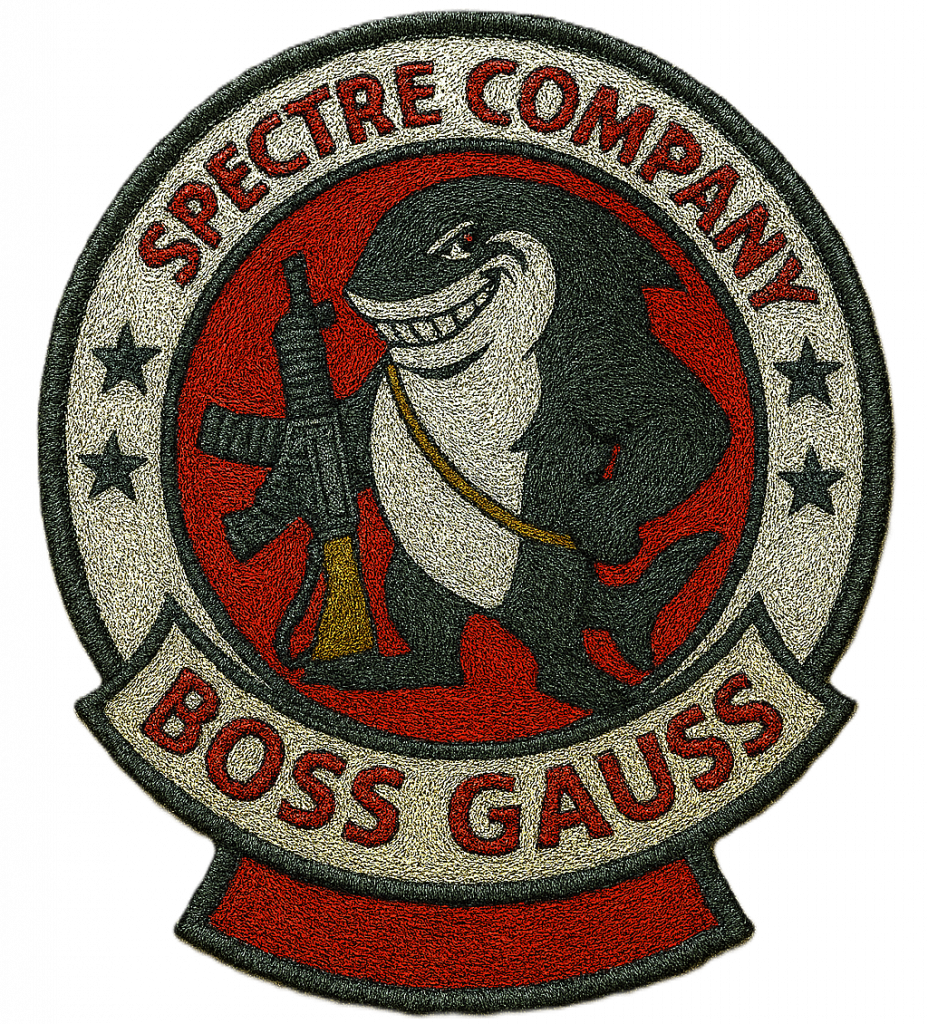
VII. Conclusion
The ORCA is more than a BattleMech. It is a testament to the ingenuity of small-scale innovation in an era dominated by industrial giants. Its survival through centuries of war, neglect, and obscurity speaks to the enduring power of good design and the passion of those who refuse to let history be forgotten.
Spectre Company’s stewardship of the ORCA legacy ensures that these leviathans continue to roam the battlefield, roaring defiance against obsolescence and reminding the Inner Sphere that even the deepest waters hold monsters worth fearing.
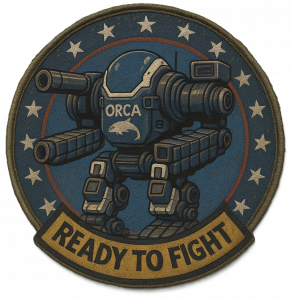
Author’s Note: some images generated using AI.